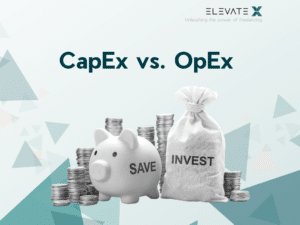There are many tips and guides online to help freelancers find a suitable hourly rate. The problem is that these guides are often only designed to advise the freelancer. When it comes to finding concrete tips on what freelancer costs the company can expect, the search becomes more difficult.
The pricing is individual for each freelancer and depends on many factors. However, in this article, you will learn what you can roughly expect, how the respective hourly wage is calculated, and what the advantages are compared to a permanent employee.
How you can negotiate your hourly wage as a freelancer, you can learn here.
1. What Does It Cost to Hire a Freelancer?
As already mentioned, the costs are very individual and depend a lot on the selected freelancer and his area of expertise. Pricing Guide for Freelancer Hiring.
Normally, you can expect an hourly wage of 90 to 140€ for an IT freelancer in Central Europe. This may sound a lot at first. However, you should keep in mind that freelancers are only paid for productive hours, meaning the actual time of work. In addition, freelancers have to cover costs that would fall back on the company in the case of permanent employees. This includes, for example, marketing, accounting, and insurance costs.
Also, the hourly rate covers all possible incidental costs for the duration of the project, and you as the client can be sure that you will not incur any additional costs.
In addition, the hourly rate often includes the services of a freelancer agency. This offers the advantage that time-consuming searches for potential freelancers are no longer necessary.
At ElevateX you simply contact us. In a personal meeting, we will clarify all basic conditions and within a short time, we will introduce you to potential freelancers for your project. In addition, we support the cooperation and are available for questions at any time.
You can use our cost calculator to compare the employment costs of freelancers and employees.
2. What constitutes Freelancer Costs?
In the following, we have created a list for you with things to keep in mind when you are considering hiring a freelancer. The more specific your ideas and expectations are for possible freelancers, the more accurate the price can be calculated.

- Qualification
Here you should ask yourself what demands you have on the freelancer. For example, whether you would prefer to hire a junior or senior developer for an IT project. If you choose a senior developer, you can expect higher costs. - Knowledge and Experience
Of course, the freelancer’s knowledge and experience are relevant for the price negotiation. Here, it is important to not only have the widest possible range of professional knowledge, but also knowledge in the specific area. And not only professional knowledge is interesting, but also experience from previous projects and cooperation with other teams and companies.
These experiences also guarantee good adaptability of the freelancer. This ensures a quick familiarization and high productivity already at the beginning of the project. - Team Role
The role in the team in which the freelancer is to work is closely linked to his tasks and knowledge. For example, if this person needs to work as a project manager, they will also need skills in leadership and management. These things can also lead to a higher hourly rate. - Tasks
What is the task? What needs to be done? The following rule applies: The more complex a task is, the higher the hourly wage is calculated. For example, the costs differ between web designers and full-stack developers. The environment also plays a role here. In a pleasant and positive environment, people prefer to work more effectively, and this also has a positive effect on the hourly rate. - Project time
The duration of the project also plays an important role. A longer duration means more security for freelancers, which leads to a lower hourly wage. Of course, it must be considered that a longer period of the project automatically causes higher costs. Likewise, the issue of false self-employment plays a role in longer projects.
An informative article and a useful checklist to avoid false self-employment, you can find here. - Flexibility
The flexibility you expect from your freelancer is also essential for the hourly rate. This concerns the start of the project and how shortly he needs to start working. And it also concerns the working method and communication in the work phase. Does the freelancer work remotely, or is an on-site assignment desired? - Technical Aspects
Freelancers often work with their own hardware. However, if you insist that your freelancer works with the company’s hardware, make sure that it meets the qualitative requirements. The hardware and also the software should be designed to handle the given task without any problems. If this is not the case, it could harm the price negotiation. - Branding
Ask yourself how your company affects the environment. Do employees like working for you? What do you stand for? If employees like working for a company, they are often likely to negotiate a lower hourly rate. In addition, the chances for renewed cooperation increase. Also, if you have a good reputation, it is easier to find other freelancers for new projects. - Mediator
Many companies nowadays use intermediaries. The advantage is that the search is often much faster. In addition, you can assume that the presented freelancer fits well with your project and if this should not be the case, you always have the option to refuse the cooperation. As a rule, the costs can be calculated with approx. 10-30% on the estimated hourly wage of the freelancer.
3. Why Hire Freelancers?
At first, all these points may sound like a lot of effort and high costs.
However, freelancers can add significant value to your business.
In this article, we explain why freelancers are crucial for revenue and employment growth.
And in this article, we show how you as a company can benefit from working with freelancers.
In addition:
- Freelancers do not incur costs that are borne by the company for permanent employees. This includes costs for insurance, vacation, and training fees.
- Freelancers often work with their own hardware, which is why costs for equipment and software are also eliminated.
- By working in other teams and companies, freelancers can additionally bring in external knowledge and experience that often provide a different perspective on things. Such intangible benefits, which cannot be directly calculated in money, should also be considered when working with freelancers.
If you compare the costs of freelancers and permanent employees, they seem to be less far apart than you might think.
4. Freelancer Costs vs. Costs For Permanent Employees
Never in history have there been more freelancers than now.
While permanent employees can have a great positive impact on company culture, especially when they grow into the role and get to know the culture and environment of the company, that might not always be the case for the productivity and growth of the company.
Even though there are benefits of working with in-house employees, this becomes an increasingly difficult task for many companies. This is partly due to the lack of a skilled workforce – especially in the technology sector. Therefore, more companies than ever are finding out that freelancers can be the perfect solution to their problems. In fact, it is projected that in 2027, as much as 50,9% of the American workforce will be made up of freelancers.
How much does hiring a new employee really cost?
When comparing the costs of freelancers and in-house employees is it often overlooked, that the actual cost of employees is much more than the base salary and includes many days they do not actually work – plus sick days, vacation, PTO, and insurance in many countries. As a matter of fact, it is estimated that the actual cost of a full-time employee can be as much as 213% of the annual salary.
Freelancers on the other hand are only paid for the time they work. On top of that, many additional costs like insurance, training costs, or social security, are not added to the payment, as is the case with full-time employees.
Freelancer vs. Full-time employee – A cost comparison
Even though at first glance an hourly rate of 90€-140€ per hour for an IT freelancer might seem like a lot, there are no additional or “hidden” costs as is the case with full-time employees.
In a direct comparison of freelancers and full-time employee costs, an author finds that the cost savings of working with freelancers can be as high as 5,6% – assuming training and recruiting costs.
Another finding suggests that dividing the salary by the hours worked does not provide an accurate estimation of what constitutes the cost of a full-time employee.

We’ve seen that many of the “hidden” costs that apply to permanent employees do not apply to freelancers, which makes it easier to work for them in the short term. However, there are additional benefits when working with freelancers that one should consider:
- Knowledge Transfer
Freelancers bring in a new perspective and innovative solutions to a company’s problem. If onboarding and offboarding are done correctly, they can make a permanent difference by transferring their knowledge to the company’s existing employees.
- Flexibility
Due to the flexibility of working with freelancers, companies can adapt to bottlenecks in an agile and flexible way and scale accordingly.
- Being prepared for the future
The proportion of freelancers in the workforce is increasing, and companies find it increasingly difficult to find skilled workers. Freelancers can help to solve this problem by being a flexible solution for companies that wish to expand their operations.
5. Getting the Most from Working with Freelancers
We’ve seen that the cost structures for freelancers and full-time employees are very different and that the cost of a full-time employee is not just the salary, but that there are a lot of hidden costs to consider.
Freelancers often bring advantages to the company that cannot be calculated in terms of money and costs. Flexibility, external knowledge, and new skills and experience are just some of them.
Our experience and customer success stories highlight that hybrid teams of permanent employees and freelancers can bring significant value to the company. Hybrid teams combine the benefits from both worlds and bring variety to the company’s collaboration.
If you’re eager to learn more or start building a successful hybrid team, ElevateX is here to help you and provide guidance. You can start by simply booking a free consultation call and we at ElevateX will assist you in finding the right solution at the right time.








